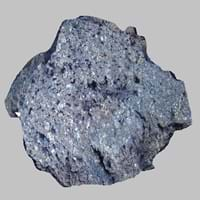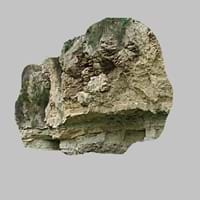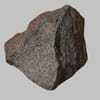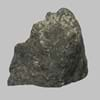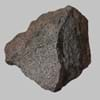Definition
Mugearite is a type of oligoclase bearing basalt, also comprising of olivine, apatite, and opaque oxides
A water-soluble mineral sediment resulting from concentration and crystallization by evaporation from an aqueous solution
Origin
Skye, Scotland
USA
Discoverer
Alfred Harker
Usiglio
Etymology
From mugear + -ite
From a sediment left after the evaporation
Class
Igneous Rocks
Sedimentary Rocks
Sub-Class
Durable Rock, Medium Hardness Rock
Durable Rock, Soft Rock
Group
Volcanic
Not Applicable
Other Categories
Opaque Rock
Coarse Grained Rock, Fine Grained Rock, Medium Grained Rock, Opaque Rock
Texture
Glassy, Massive, Porphyritic, Scoriaceous, Vesicular
Earthy
Color
Black, Brown, Light to Dark Grey
Colourless, Green, Grey, Silver, White
Durability
Durable
Durable
Appearance
Dull and Soft
Glassy, Vesicular and Foilated
Interior Uses
Floor Tiles, Flooring, Homes, Hotels
Decorative Aggregates, Entryways, Flooring, Homes, Interior Decoration
Exterior Uses
As Building Stone, Garden Decoration
As Building Stone, As Facing Stone, Garden Decoration, Paving Stone
Other Architectural Uses
Curbing
Curbing
Construction Industry
As Dimension Stone, Cobblestones, Rail Track Ballast, Roadstone
As a Flux in the Production of Steel and Pig Iron, As a Sintering Agent in Steel Industry to process Iron Ore, As Dimension Stone, Cement Manufacture, for Road Aggregate, Making natural cement, Manufacture of Magnesium and Dolomite Refractories
Medical Industry
Not Yet Used
Taken as a Supplement for Calcium or Magnesium
Antiquity Uses
Artifacts, Monuments, Sculpture
Artifacts
Commercial Uses
Creating Artwork
Used in the manufacture of Ceramic Powder, Used in the preparation of Sulfuric Acid and Silicon Diborite
Types
Alkaline Basalt, Boninite, High Alumina Basalt, Mid Ocean Ridge Basalt (MORB), Tholeiitic Basalt, Basaltic trachyandesite, Mugearite and Shoshonite
Not Available
Features
Has High structural resistance against erosion and climate, Very fine grained rock
Generally rough to touch, Splintery, Veined
Archaeological Significance
Monuments
Used
Not Yet Used
Famous Monuments
Data Not Available
Not Applicable
Sculpture
Used
Not Yet Used
Famous Sculptures
Data Not Available
Not Applicable
Figurines
Used
Not Yet Used
Formation
Mugearite forms when lava reaches the Earth's surface near an active volcano. The temperature of lava is between 1100 to 1250° C when it gets to the surface.
Evaporite is water-soluble mineral sediment which forms from concentration and crystallization by evaporation from an aqueous solution.
Mineral Content
Olivine, Plagioclase, Pyroxene
Calcite, Cancrinite, Gypsum, Kyanite, Magnetite
Compound Content
Aluminium Oxide, CaO, Iron(III) Oxide, FeO, Potassium Oxide, MgO, MnO, Sodium Oxide, Phosphorus Pentoxide, Silicon Dioxide, Titanium Dioxide
CaMg(CO3)2, CaO, Calcium Sulfate, KCl, MgO, NaCl
Types of Metamorphism
Burial Metamorphism, Impact Metamorphism
Burial Metamorphism, Cataclastic Metamorphism, Contact Metamorphism, Impact Metamorphism, Regional Metamorphism
Types of Weathering
Biological Weathering, Chemical Weathering
Not Applicable
Types of Erosion
Not Applicable
Not Applicable
Grain Size
Not Applicable
Medium to Fine Coarse Grained
Fracture
Conchoidal
Conchoidal
Streak
White to Grey
White
Porosity
Less Porous
Less Porous
Luster
Not Available
Subvitreous to Dull
Cleavage
Not Applicable
Perfect
Toughness
2.3
Not Available
Specific Gravity
2.8-3
2.86-2.99
Transparency
Opaque
Translucent
Density
2.9-3.1 g/cm3
2.8-2.9 g/cm3
Resistance
Heat Resistant, Pressure Resistant, Wear Resistant
Heat Resistant, Pressure Resistant
Deposits in Eastern Continents
Asia
India, Russia
Not Available
Africa
South Africa
Not Available
Europe
Iceland
United Kingdom
Others
Not Yet Found
Not Yet Found
Deposits in Western Continents
North America
Canada, USA
USA
South America
Brazil
Colombia, Paraguay
Deposits in Oceania Continent
Australia
Not Yet Found
Central Australia, Western Australia
All about Mugearite and Evaporite Properties
Know all about Mugearite and Evaporite properties here. All properties of rocks are important as they define the type of rock and its application. Mugearite belongs to Igneous Rocks while Evaporite belongs to Sedimentary Rocks.Texture of Mugearite is Glassy, Massive, Porphyritic, Scoriaceous, Vesicular whereas that of Evaporite is Earthy. Mugearite appears Dull and Soft and Evaporite appears Glassy, Vesicular and Foilated. The luster of Mugearite is not available while that of Evaporite is subvitreous to dull. Mugearite is available in black, brown, light to dark grey colors whereas Evaporite is available in colourless, green, grey, silver, white colors. The commercial uses of Mugearite are creating artwork and that of Evaporite are used in the manufacture of ceramic powder, used in the preparation of sulfuric acid and silicon diborite.
